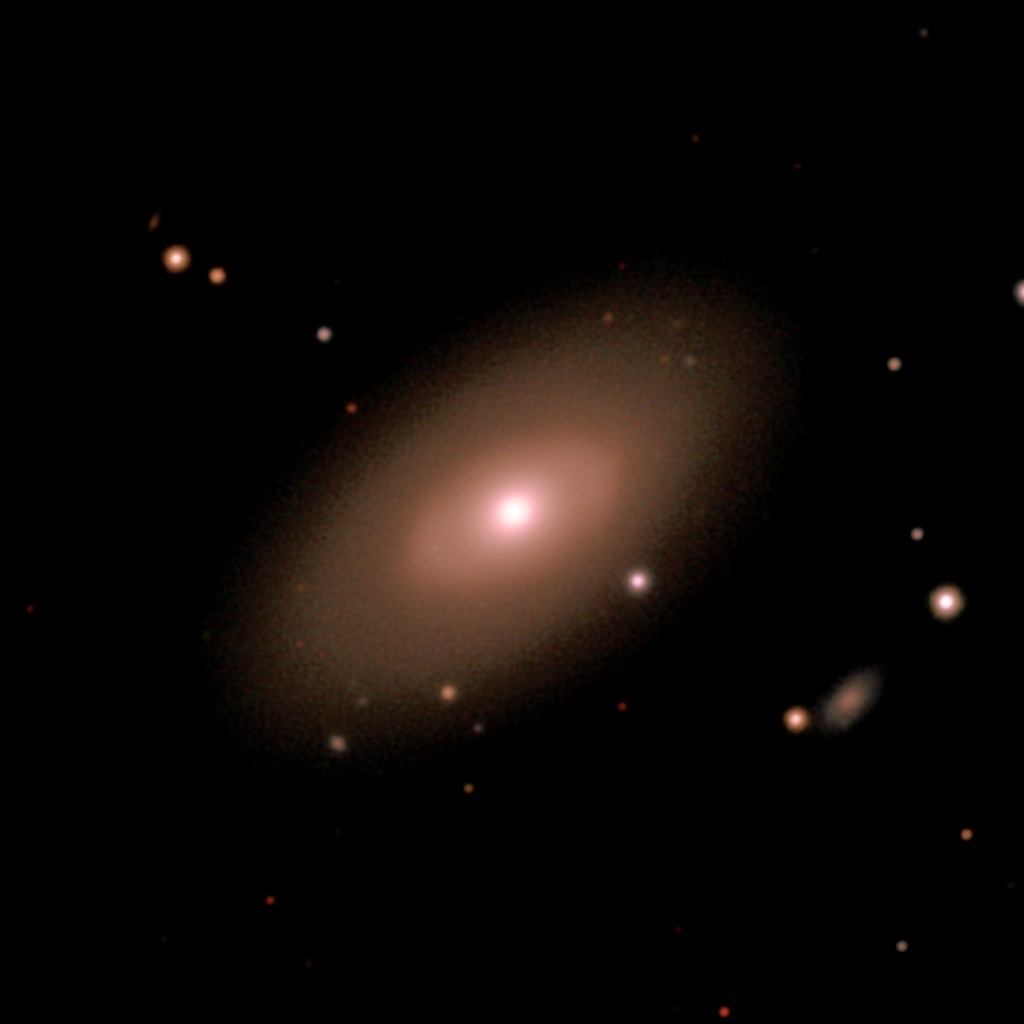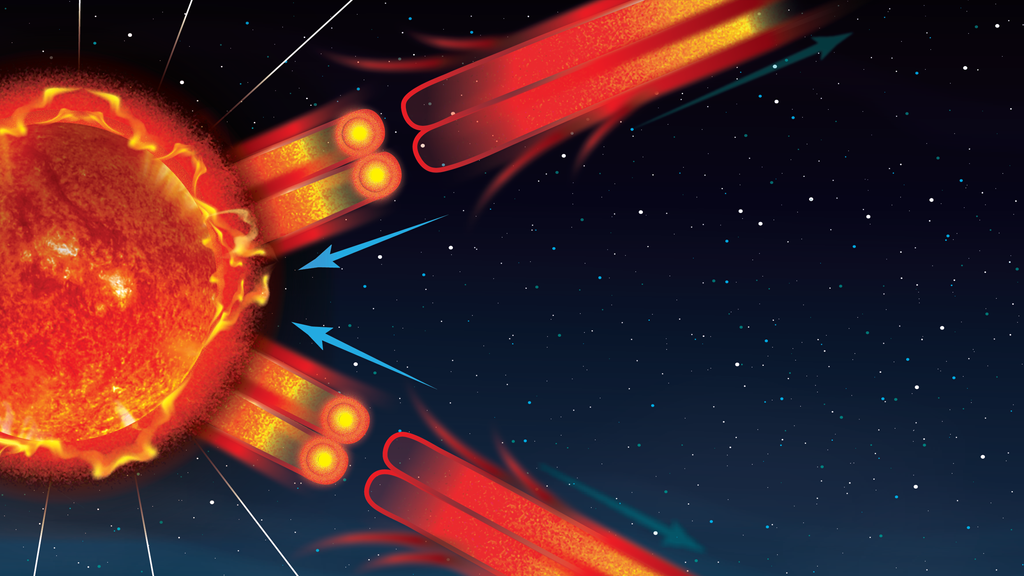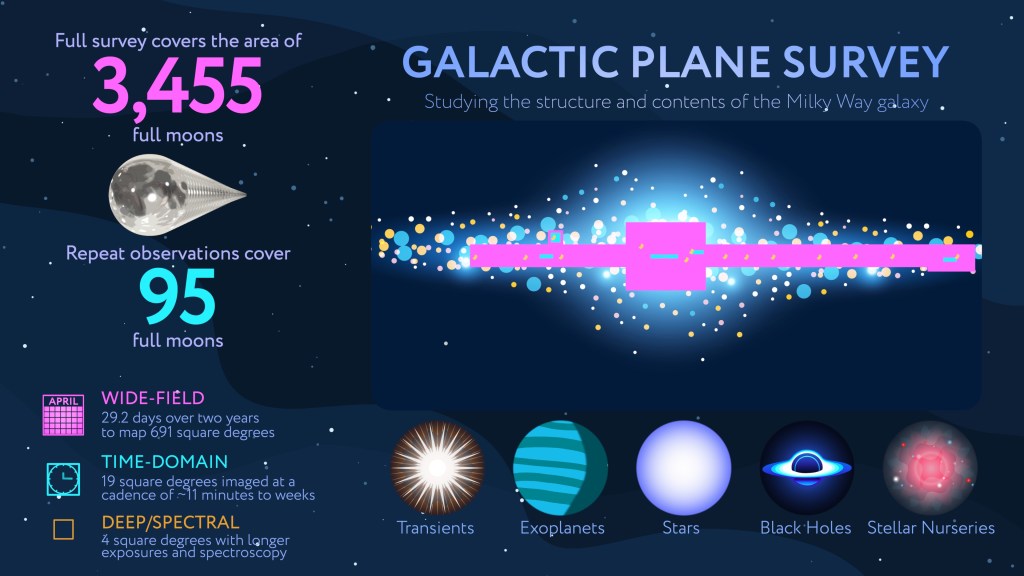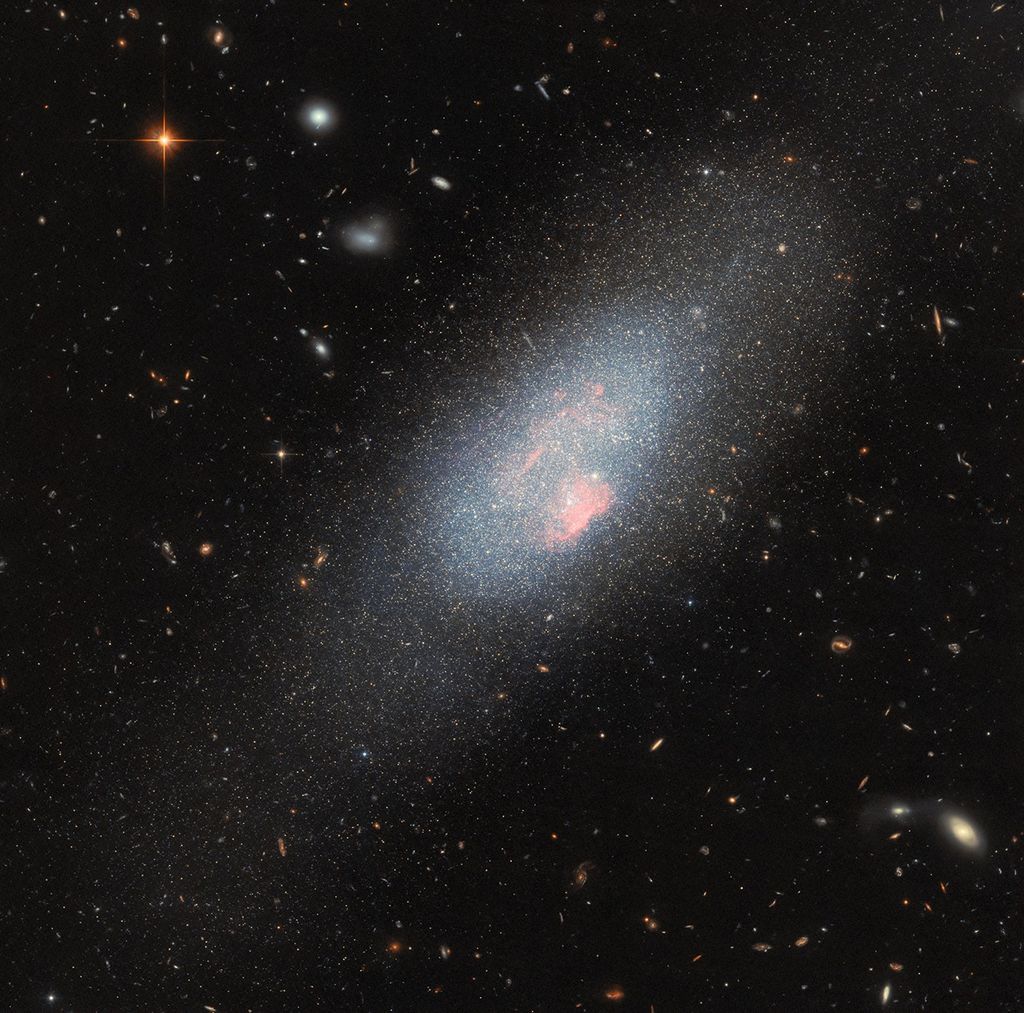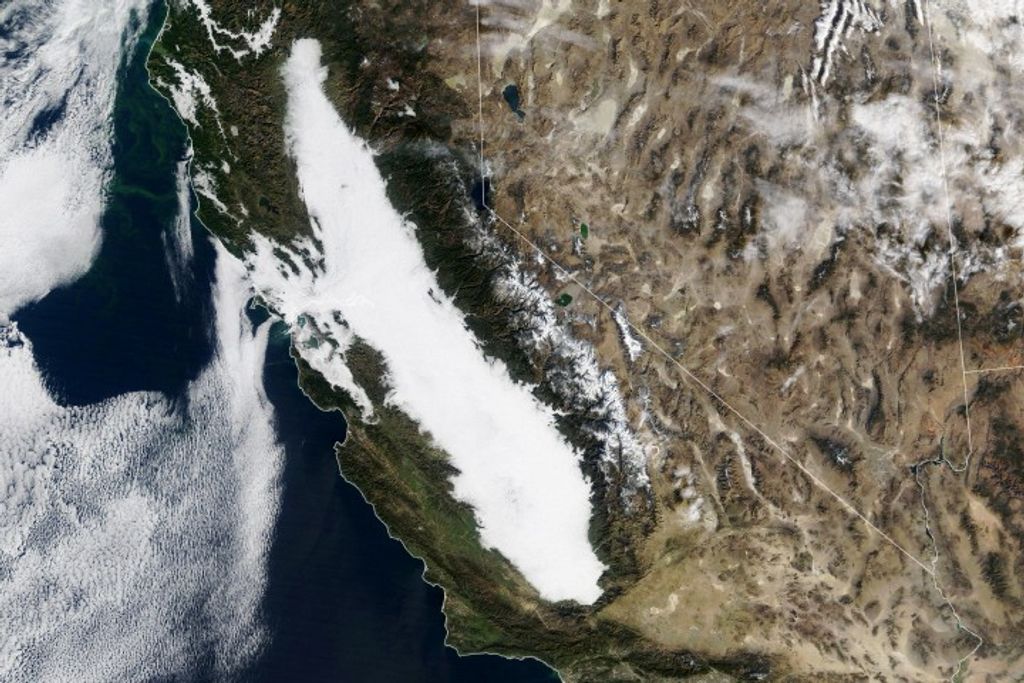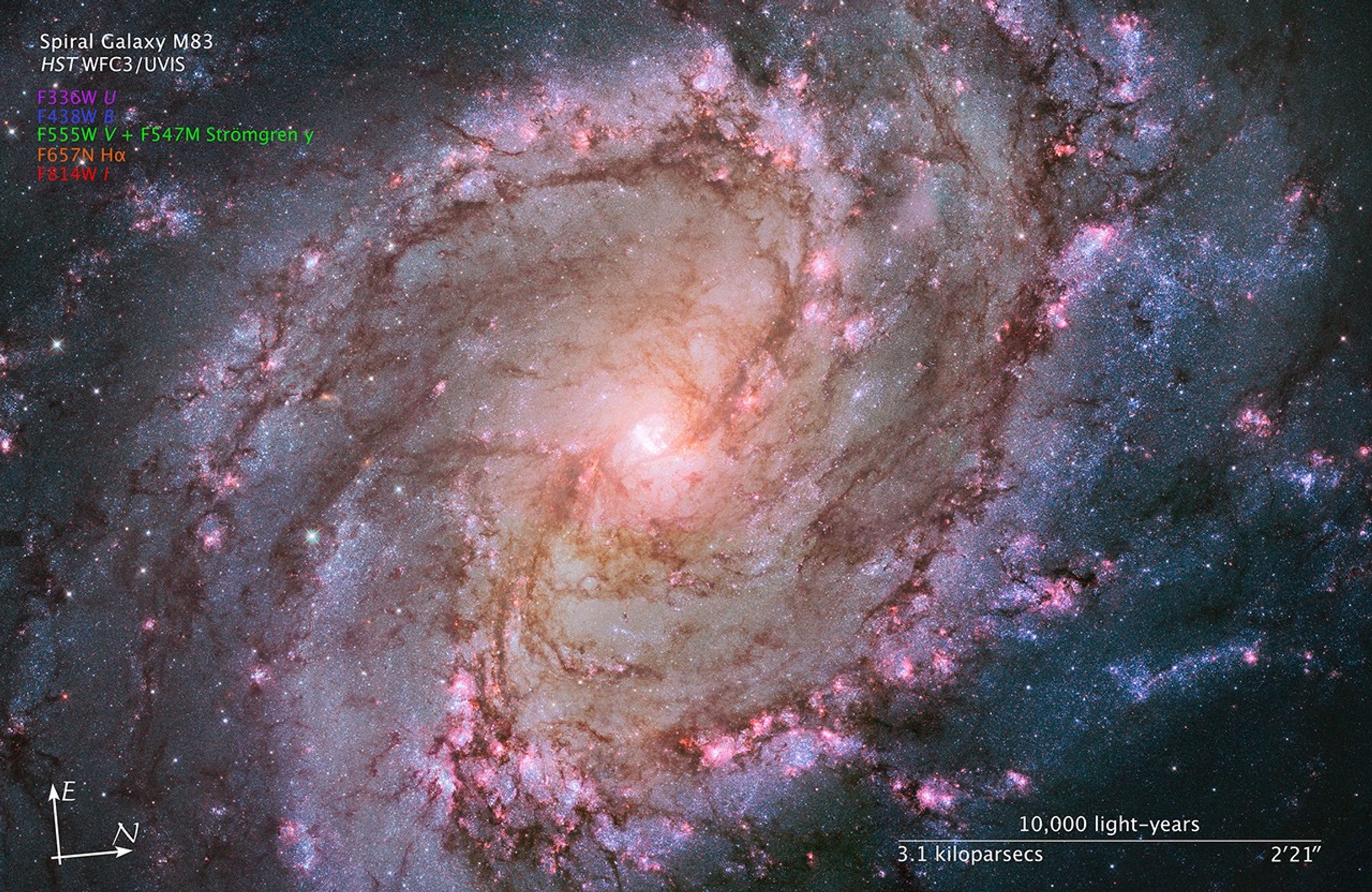1 min read
Hubble-Magellan Composite of M83

About the Object
- R.A. PositionR.A. PositionRight ascension – analogous to longitude – is one component of an object's position.13h 37m 0.95s
- Dec. PositionDec. PositionDeclination – analogous to latitude – is one component of an object's position.-29° 51' 55.51"
- ConstellationConstellationOne of 88 recognized regions of the celestial sphere in which the object appears.Hydra
- DistanceDistanceThe physical distance from Earth to the astronomical object. Distances within our solar system are usually measured in Astronomical Units (AU). Distances between stars are usually measured in light-years. Interstellar distances can also be measured in parsecs.15 million light-years (4.5 million parsecs)
About the Data
- Data DescriptionData DescriptionProposal: A description of the observations, their scientific justification, and the links to the data available in the science archive.
Science Team: The astronomers who planned the observations and analyzed the data. "PI" refers to the Principal Investigator.The image was created from Hubble data from proposal 11360: R. O'Connell (University of Virginia), B. Balick (University of Washington), H. Bond (STScI), D. Calzetti (University of Massachusetts), M. Carollo (Swiss Federal Institute of Technology, Zurich), M. Disney (University of Wales, College of Cardiff), M. Dopita (Australian National University), J. Frogel (Ohio State University Research Foundation), D. Hall (University of Hawaii), J. Holtzman (New Mexico State University), P. McCarthy (Carnegie Institution of Washington), F. Paresce (European Southern Observatory, Germany), A. Saha (NOAO/AURA), J. Silk (University of Oxford), A. Walker (NOAO/CTIO), B. Whitmore (STScI), R. Windhorst (Arizona State University), and E. Young (University of Arizona); and 12483: W. Blair (JHU), K. Long (STScI), F. Winkler (Middlebury College), R. Soria (Curtin University), B. Whitmore (STScI), R. Chandar (University of Toledo), P. Ghavamian (Towson University), M. Dopita (Australian National University), and B. Rangelov (George Washington University). - InstrumentInstrumentThe science instrument used to produce the data.HST>WFC3/UVIS
- Exposure DatesExposure DatesThe date(s) that the telescope made its observations and the total exposure time.August 2009 - September 2012, Exposure Time: 20 hours
- FiltersFiltersThe camera filters that were used in the science observations.F336W (U), F438W (B), F547M (Strömgren y), F555W (V), F657N (H-alpha), and F814W (I)
- Object NameObject NameA name or catalog number that astronomers use to identify an astronomical object.M83, NGC 5236, Southern Pinwheel Galaxy
- Object DescriptionObject DescriptionThe type of astronomical object.Barred Spiral Galaxy
- Release DateJanuary 9, 2014
- Science ReleaseHubble Views Stellar Genesis in the Southern Pinwheel
- CreditNASA, ESA, and the Hubble Heritage Team (STScI/AURA); Acknowledgment: W. Blair (STScI/JHU), Carnegie Institution of Washington (Las Campanas Observatory), and NOAO

This image is a composite of separate exposures acquired by the WFC3 instrument on the Hubble Space Telescope. Several filters were used to sample broad and narrow wavelength ranges. The color results from assigning different hues (colors) to each monochromatic (grayscale) image associated with an individual filter. In this case, the assigned colors are: Purple: F336W (U) Blue: F438W (B) Green: F555W (V) + F547M (Strömgren y) Orange: F657N (H-alpha) Red: F814W (I)
Related Images & Videos
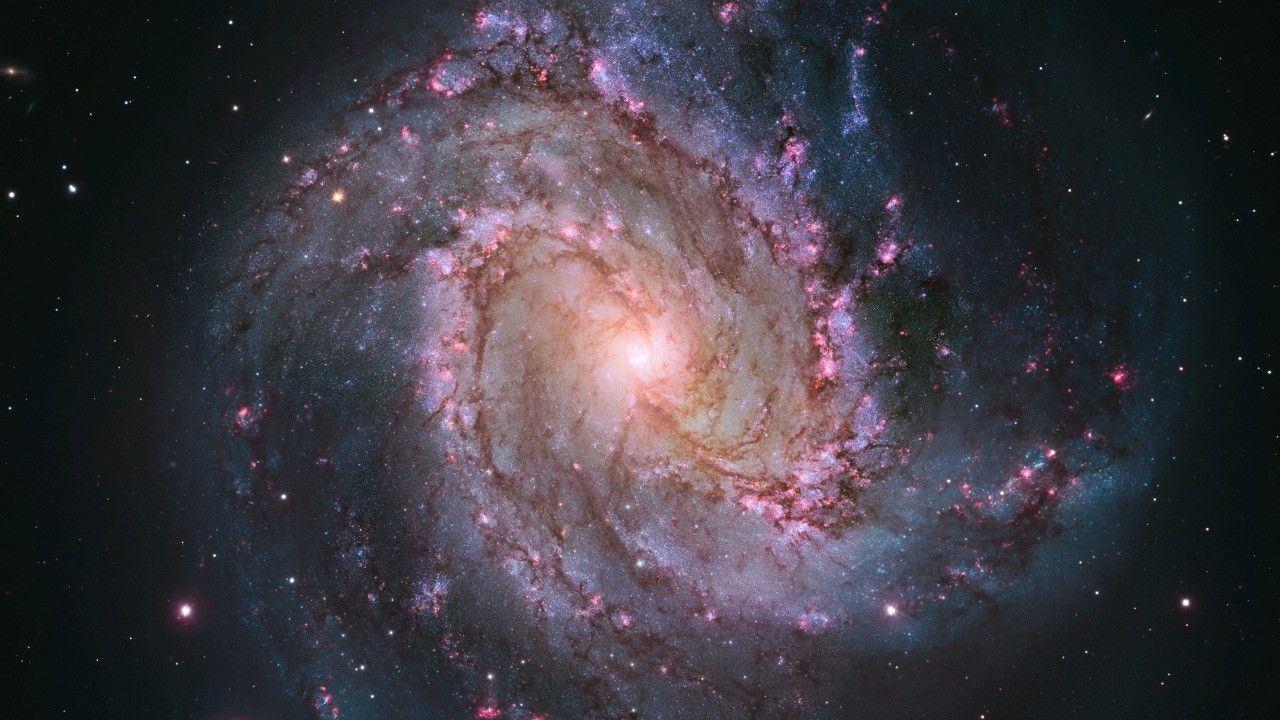
Hubble Views Stellar Genesis in the Southern Pinwheel (Pan and Zoom)
Astronomers using NASA's Hubble Space Telescope focused on the barred spiral galaxy M83, also known as the Southern Pinwheel, located 15 million light-years away. By assembling a number of Hubble images, scientists have made a mosaic of the iconic galaxy. This image shows...
Share
Details
Claire Andreoli
NASA’s Goddard Space Flight Center
Greenbelt, Maryland
claire.andreoli@nasa.gov


